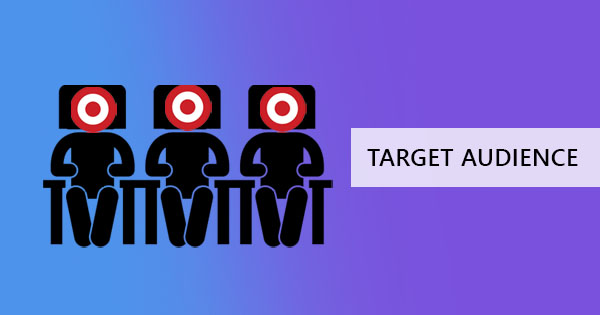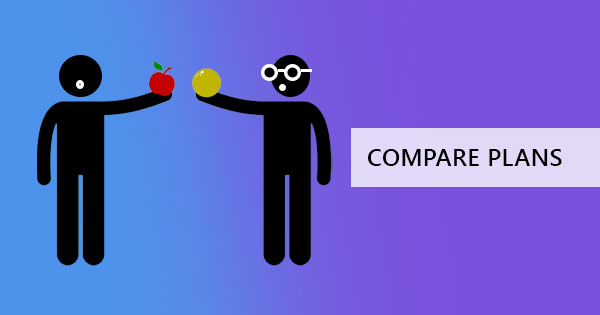
Finding the right target market is an important aspect of any online marketing. Unfortunately, not everyone has enough funds and can actually pinpoint the exact audience that their brand should reach. When a brand fails to identify and reach it, it actually loses money and time. Winning the audience becomes difficult because these readers are not that much interested, to begin with. To top it off, economic crisis, new trends, pandemics, and other natural disasters can affect how these readers engage. So basically, what we’re trying to say is that when you’re trying to build some online presence and trying to get more sales, the first thing you should do is to find the right audience.

What is a Target Market and how does it differ from Target Audience?
Contrary to popular belief, the target market and target audience are not the same. In fact, a target market is defined as a “segment of customers” while a target audience is the much more focused readers who can be converted to buy or respond to your ad. When you create an ad and you put all the demographics that filters your readers based on sex, location and age, that is your target market. More likely, your target audience is already in your target market as this is the narrower group.
Why is it important to know them?
As mentioned, failing to get your right audience is also losing time and money. It also makes the competition much more difficult and effective marketing strategies can only be set if you know to whom you’re planning it. If you’ve noticed, surveys and focus groups are constantly done by big companies to get to know their audience better. Getting to understand your target audience better and what they need means being able to create the right tactic that will make them click.
Ask yourself the following questions:
- What content can your audience relate to?
- What tone and messages should the brand have?
- Where should I target the most?
- What topics should I focus on?
Most of you would probably be playing safe and create ads that fit a wide range of readers. This is a classic move that usually results to failure every time. Being the jack of all trades just doesn’t make you as memorable enough for everybody to recall. Niche-based businesses that have specific interests can easily penetrate definite audiences. It’s just like playing pairs, the supply and demand should match and all you have to do is look for those demanding it.
Each kind of brand, whether it’s a product, service, or blog, has its own audience no matter how specific that is. Stick to it and embrace it. Find your audience and know who they are.

Where do I start?
1. Know your product
Knowing your product means knowing what kind of customers you should also expect so list down what you think your market looks like. Ask yourself, who would be interested, and what kind of people would most likely be your consumer? Describing and assuming the kind of character your customer has is one way to start looking.
A beauty blog is a great example as plenty of these are already present online. We all know that most readers would most likely be female ages 16-40 years old. Specific beauty bloggers that focus on skincare to remove acne might have fewer age groups engaged as most adults above 20 don’t get acne anymore due to natural biology. As you can see, the more you focus on the niche, the more you can narrow down the demographics. It seems limited but it actually simplifies your target.
To define what you’re looking for, ask yourself the following questions:
- How old are the people interested in my topic/product?
- What factors affect the age and gender? Natural/biological etc.
- Where do these people likely live? If my products were fertilizers, would they live in the urban areas?
- What’s their income?
- What social media do they use often?
- Who are my competitors and who do they follow? If there was a celebrity or a YouTube channel relating to my topic, who would they be looking up to for this?
- What are the problems they have with this topic?
- How can I solve this for them? What can I offer?
2. Solve the problem
The last question says “How can I solve this for them?”
This is essential to consider for any company. The product doesn’t need to be new to the world, it could be the same offer but much more accessible to customers or it could have something that your competitors have missed. By being the problem-solver, you establish branding, attract the right people, and get the buying audience.
Branding is when you become known for a specific trait. Fenty Beauty is one example of a product that has established this and solves problems of a daily consumer. You could assume that it there are plenty of foundations already available in the market so it must be the celebrity endorsing it that made it successful. But the fact of the matter is, Fenty solved consumer problems by providing more skin shades available for those who couldn’t find their exact match. With over 50 shades available (as supposed to the usual 3 shades), Fenty has won over more consumers than other brands.
Naturally, there’s a limit to solving problems for your consumers so don’t bend backward trying to adapt to every distress as this might also kill your brand.

3. Connect
The fast and digital age is here. There’s no excuse for not trying to connect and take advantage of every social media available online. Social media can help you do your research, figure out what your customers want, get updates of the latest needs and trends, and understanding what they like. Be attentive to what they want and show genuine concern online.
In the old days, focus groups were manually done face-to-face, and companies had to pay for people to participate. Now, social media allows businesses to access analyzed data, showing the number of likes, shares, and impressions that translate to consumer behavior. People who spend more time and click on certain topics can be assumed an interest – it is called a “like” after all. But of course, certain social media also pertain to a certain niche so be ready to drop some online portals that don’t work.
Aside from social media, there are other means of connecting with your customers. Emails and calls are not outdated yet, especially if you’re a small local business that can really reach out to their customers. Like our past article (How to Sell for the Future) mentions, there are three ways you can still connect – direct, subtle, and indirect approaches. The direct method includes voice calls or chatting, the subtle method is showing presence in social media by posting and the indirect approach is sending them a PDF form via email. The last approach mentioned talks about getting to know your customers without having to really talk to them in person. You can create PDF forms that they can fill with comments and send back. Don’t forget to thank them or provide a reward so they can be persuaded to participate!

4. Keep it numbered
Analytics play a vital role in marketing so pay close attention to the data you get as you progress with your business. Data allows you to create your next move and protects you from making repeated mistakes.
If you have a website, Google Analytics is one way to get data for it, and its free! If you have social media pages and accounts, you can also get free data that shows you which posts get the most traffic, the most interactions, and the most sold.
Make sure to also run a competitive analysis so you know what your competition lacks and what you can solve. With this analysis, you can also see what works and what doesn’t work for them, allowing you to come up with a marketing strategy that has a higher chance of working!
Use that data and the strengths that you have to engage more customers.
5. When you have data, it’s time to stop assuming
Assuming it can only be acceptable if you don’t have data but once you do, it’s time to stop. The data you have should be a combination of the numbers from analytics and the information you get from your customers themselves. This combination is your key to creating the perfect marketing strategy.



